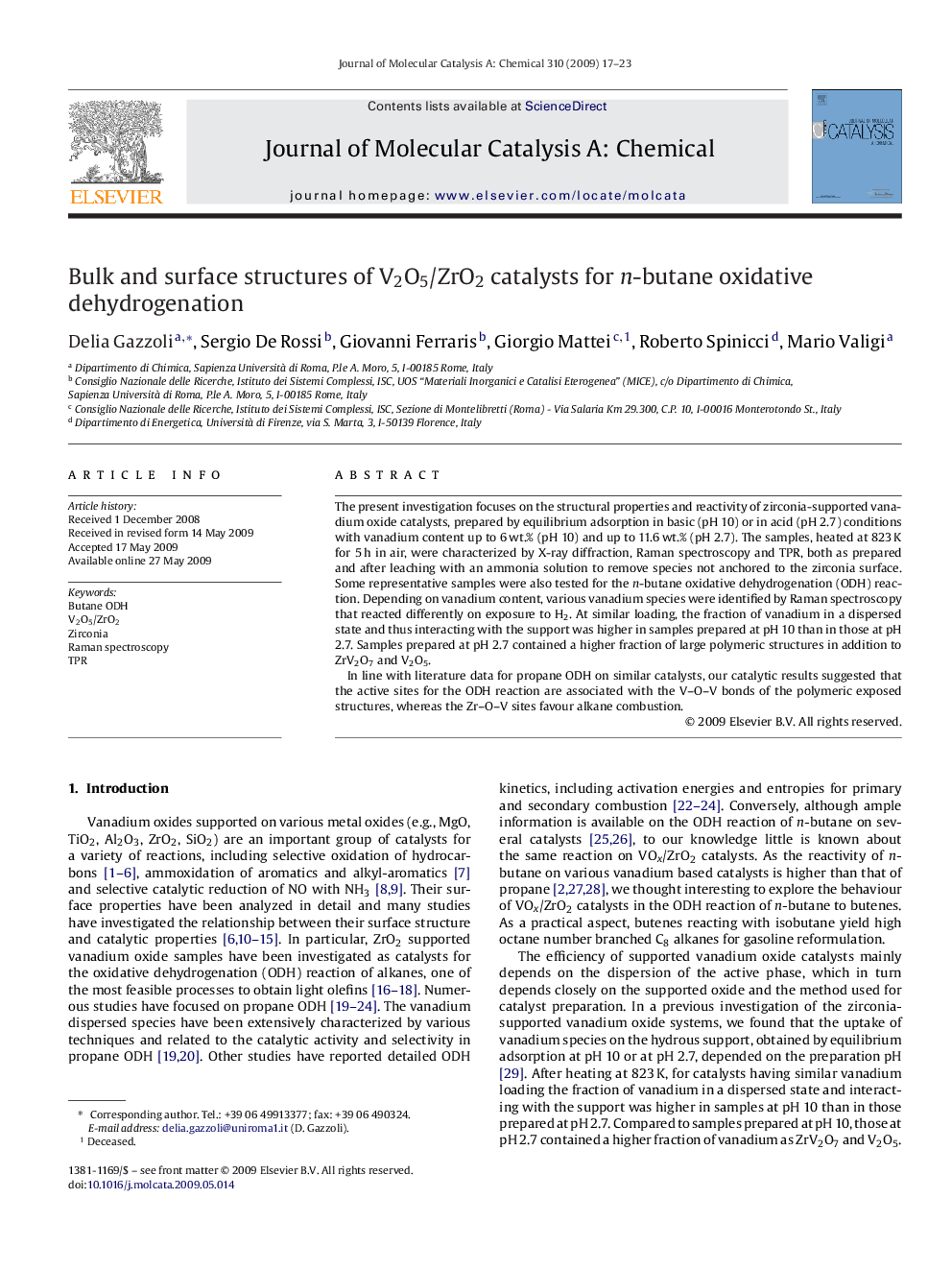| Article ID | Journal | Published Year | Pages | File Type |
|---|---|---|---|---|
| 66909 | Journal of Molecular Catalysis A: Chemical | 2009 | 7 Pages |
The present investigation focuses on the structural properties and reactivity of zirconia-supported vanadium oxide catalysts, prepared by equilibrium adsorption in basic (pH 10) or in acid (pH 2.7) conditions with vanadium content up to 6 wt.% (pH 10) and up to 11.6 wt.% (pH 2.7). The samples, heated at 823 K for 5 h in air, were characterized by X-ray diffraction, Raman spectroscopy and TPR, both as prepared and after leaching with an ammonia solution to remove species not anchored to the zirconia surface. Some representative samples were also tested for the n-butane oxidative dehydrogenation (ODH) reaction. Depending on vanadium content, various vanadium species were identified by Raman spectroscopy that reacted differently on exposure to H2. At similar loading, the fraction of vanadium in a dispersed state and thus interacting with the support was higher in samples prepared at pH 10 than in those at pH 2.7. Samples prepared at pH 2.7 contained a higher fraction of large polymeric structures in addition to ZrV2O7 and V2O5.In line with literature data for propane ODH on similar catalysts, our catalytic results suggested that the active sites for the ODH reaction are associated with the V–O–V bonds of the polymeric exposed structures, whereas the Zr–O–V sites favour alkane combustion.
Graphical abstractThe catalysts mainly contain polymeric vanadium structures (a), partly interacting with the support surface (b). The exposed polymeric V–O–V structures are associated with the ODH reaction activity, whereas Zr–O–V sites favour alkane combustion.Figure optionsDownload full-size imageDownload as PowerPoint slide
